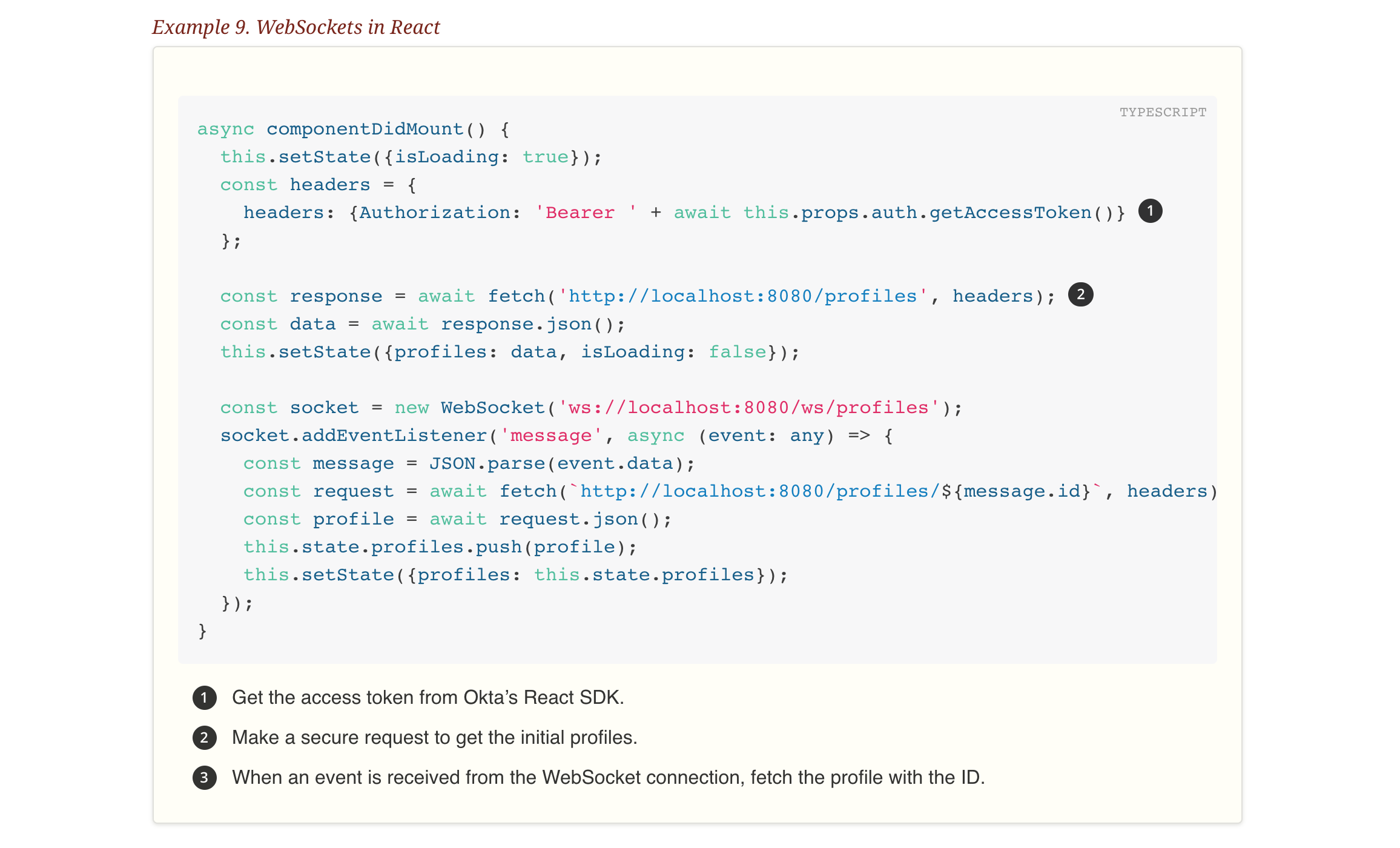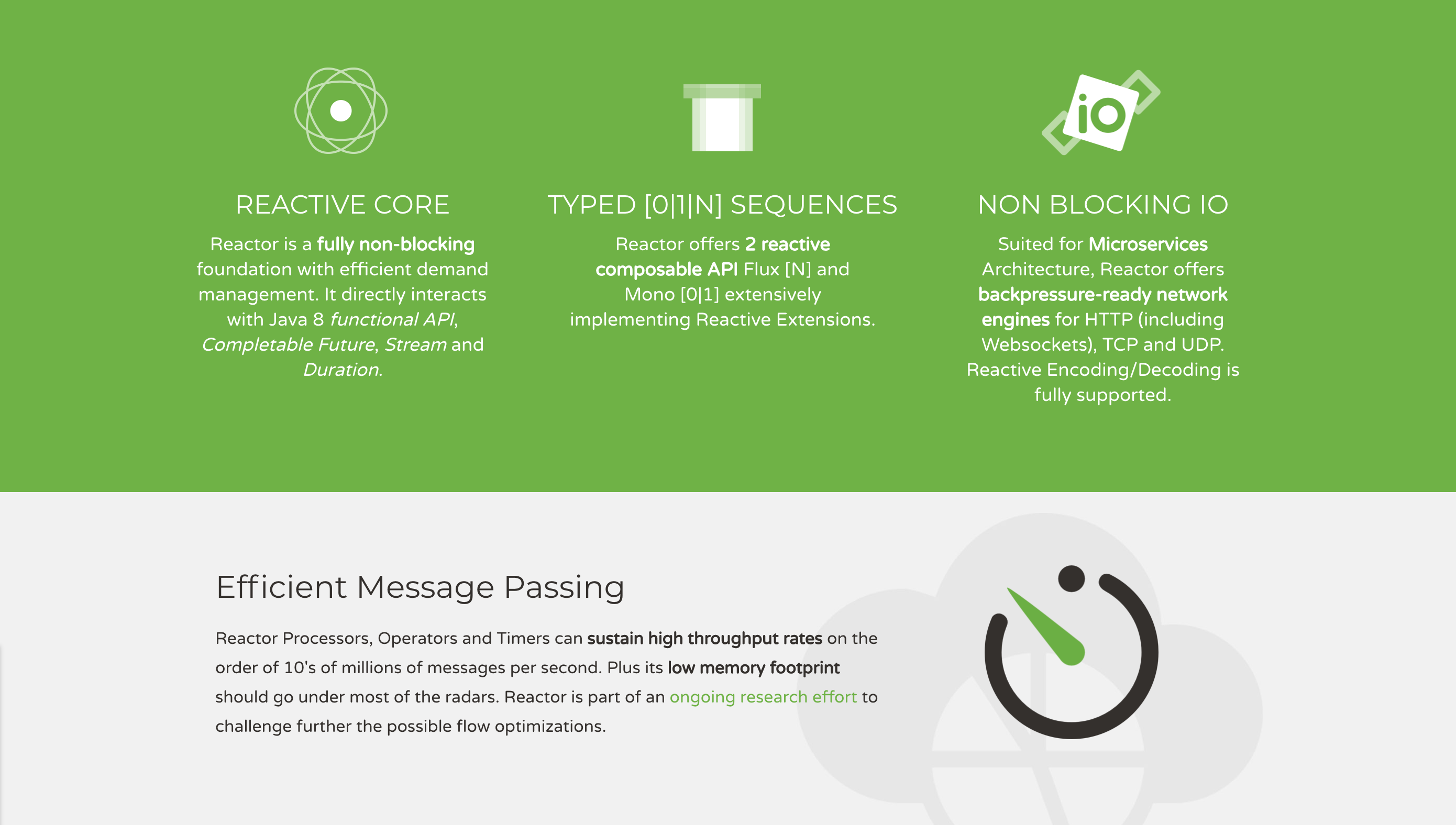Articles tagged reactive-api
R2DBC and Spring for Non-Blocking Database Access

Reactive APIs are a powerful way to handle and serve large amounts of data and large numbers of requests in a web application. They rely on a “server-side event” model in which the client (e.g. your browser) subscribes to “events” on the server, and the server “pushes” events to the client as they become available. For simple CRUD applications this is not very useful. However, in situations with millions of “subscribers” it can offer improved...
Full Stack Reactive with Spring WebFlux, WebSockets, and React

Spring WebFlux can be used to create a REST API with streaming data. Spring WebFlux can also be integrated with WebSockets to provide notifications that clients can listen to. Combining the two is a powerful way to provide real-time data streaming to JavaScript or mobile clients. Add React to the mix and you have an excellent foundation for a full-stack reactive architecture. React is a UI toolkit (similar to GWT) that lets you build components...
Build Reactive APIs with Spring WebFlux

Spring Boot 2.0 was a long-awaited release from the good folks at Pivotal. One of its new features is reactive web programming support with Spring WebFlux. Spring WebFlux is a web framework that’s built on top of Project Reactor, to give you asynchronous I/O, and allow your application to perform better. If you’re familiar with Spring MVC and building REST APIs, you’ll enjoy Spring WebFlux. There’s just a few basic concepts that are different. Once...
Get Started with Reactive Programming in Spring

Reactive programming allows you to build systems that are resilient to high load. Handling lots of traffic isn’t a problem because the server is non-blocking and doesn’t block client processes to wait for responses. The client cannot directly observe, or synchronize with, the execution that occurs on the server. When an API is struggling to handle requests, it should respond in a sensible way. It shouldn’t fail to work or drop messages in an uncontrolled...